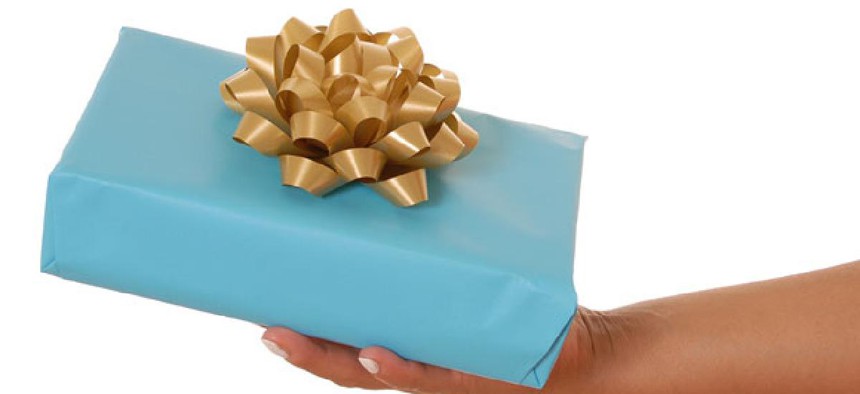
PhotoXpress
Saying Thank You for a Job Well Done
Rear Admiral Denny Moynihan's retirement provides some leadership lessons.
Last week I had the honor to be present for a milestone in the life of a friend of mine. It was the retirement and change of command ceremony for the U.S. Navy’s Chief of Information (CHINFO), Rear Admiral Denny Moynihan. On a Friday afternoon at the Sail Loft in the Washington Navy Yard, several hundred uniformed and civilian friends and colleagues of Denny’s gathered to say thank you to him and his family for 27 years of service and to wish them all well on their journey.
As its CHINFO for the past three years, Admiral Moynihan has been the Navy’s primary spokesperson and message manager for events as diverse as the response to the Japanese earthquake and tsunami, the repeal of the Don’t Ask, Don’t Tell policy and the first ever Carrier Classic basketball game on ESPN during Veteran’s Day weekend.
Denny’s colleagues had a lot to say about him and to thank him for. While not every organization can bring the pomp and circumstance to a thank you celebration that the U.S. Navy can, I learned a lot about how to thank someone for a job well done that can apply to just about any organization.
Here are three of those lessons that might be useful the next time you want to thank a member of your team for a job well done.
Rituals Provide a Vessel: There was a prescribed order and rhythm for Admiral Moynihan’s change of command ceremony. The Navy Band played, honored guests were seated up front, an invocation was offered, there were ceremonies within the ceremony, personal reflections from dignitaries and Admiral Moynihan himself were shared. In short, the event was full of time honored rituals. Those rituals provide a vessel within which the event and its importance are held. They tie the present to the past and provide a platform for what comes next. In a world that moves at the speed of the internet, it’s easy for rituals to get cast aside, forgotten or to never be created in the first place. That’s a shame because rituals can connect people emotionally with each other and their organization. They can build and reinforce pride and a sense of belonging. If you think about it, there are likely simple rituals that you either have or can create for your organization that would bring additional meaning to special occasions like saying thank you to an honored teammate.
Taking the Time Matters: Several hundred people, including the Chief of Naval Operations, the Under Secretary of the Navy and a few dozen admirals, took a Friday afternoon to honor Denny Moynihan and his successor as CHINFO. Like most other professionals, these are busy people whose calendars are generally racked and stacked with one meeting after another. Each of them probably had countless other priorities they could have spent their time on that day. Instead, they stopped what they were doing and came to the ceremony because they recognized that their time and presence mattered. It mattered not just to the person to whom they were saying thank you. It also mattered to that person’s family (who were all in attendance front row center – spouse, children, parents, siblings, uncles and aunts). It mattered to the members of the Navy public affairs community. It mattered in terms of connecting the present with the past and the future. Time is one of the most precious investments you can make as a leader. The return on that investment is likely higher than you would initially imagine.
Preparation Makes The Difference: There is a protocol and a rhythm in a ceremony like the one for Admiral Moynihan. The band was prepared to play its role flawlessly. The ushers knew the plan and handled the guests with grace. The speakers from the Under Secretary to the CNO to Admiral Moynihan and his successor delivered remarks that were mixed with good natured humor, illustrative stories and heartfelt appreciation at just the right length of time. Everyone that had a role to play in the ceremony was well prepared for their role and it made the difference between it being just another ceremony and something truly memorable and evocative. You can’t make the positive impression you want to leave with your honoree and your organization by just winging it. It requires advance planning and preparation.
What other lessons have you learned about how to offer recognition and thanks in a way that leaves a lasting positive impression?







